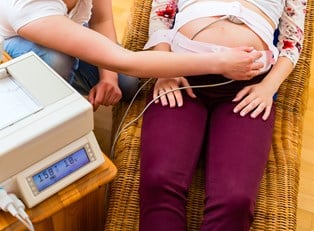A midwife provides care to women during pregnancy, birth, and the postpartum period. They have knowledge that can help to educate women in areas like birth control, breastfeeding, and nutrition. Midwives also provide hands-on assistance during birth. There are several formal types of midwives today, although standards do vary from one area to the next.
- Certified Nurse-Midwife
A certified nurse-midwife, or CNM, has expertise and training in two healthcare fields. These midwives have attended college, passed exams, and received a formal license to practice as a professional nurse. They have also gone through separate training and exams in order to achieve a license as a midwife. A CNM can provide the most comprehensive type of care for pregnant women. You will find a CNM doing everything from gynecological exams to providing medical counseling about birth control and postpartum issues. A CNM usually assists with birth in a hospital and not at home.
- Certified Professional Midwife
A certified professional midwife, or CPM, has met all of the educational and examination requirements to acquire a certification to practice midwifery professionally. A CPM does not hold a nursing degree. A CPM must have the unique qualification of experience assisting with birth outside of a hospital setting. A CPM provides general care and education during and after pregnancy, as well as direct assistance during delivery. These individuals make sure women are healthy and can refer women to doctors when medical issues occur.
- Certified Midwife
A certified midwife, or CM, is very similar to a CNM. This is a newer type of certification that is not widely recognized. A CM must have a four-year degree in a healthcare-related field, although it does not have to be in nursing. A CM does not need to be a nurse but does need to show a high level of knowledge about midwifery. A CM provides the same level of care as a CNM and will often perform the exact same set of duties before, during, and after delivery.
- Direct Entry Midwife
A direct entry midwife, or DEM, is known by a few different names, including a licensed midwife or registered midwife, depending on the area. A DEM is an individual who has passed the licensing or certification exam to become a midwife through specific classes, self-study, or simple experience. They are not required to have formal training in other healthcare fields. A DEM can provide care and education to pregnant women like other midwives. They can assist with birth, postpartum needs, and will usually deliver a baby at home and not in a hospital like a CNM.
- Lay or Uncertified Midwife
A lay midwife is a person who has not gone through formal training. These individuals are not certified or licensed as a midwife. This is sometimes normal, especially in areas where no formal midwife certifications are recognized. A lay midwife has usually gained knowledge to help women through self-study or practical experience. This individual can provide education and care for pregnant women who want to deliver at home, although the standard of care might vary depending on the person.



